Summary / TL;DR
Keyword mapping is a strategic SEO process that assigns specific keywords to individual website pages to avoid keyword cannibalisation and improve search engine rankings. It begins with thorough keyword research, grouping terms by search intent, and integrating them into a site’s structure using tools like Google Sheets. This helps identify gaps, strengthen internal linking, and guide content optimisation. Mapping also supports ongoing performance tracking, showing keyword rankings, user behaviour, and conversion data. Regular updates are essential, as evolving search trends and content needs can cause overlap or missed opportunities. Tools such as Ahrefs, SEMrush, and Moz assist with mapping, tracking, and refining keyword strategies over time.
Keyword research is one of the most critical aspects of Search Engine Optimisation, being essential in raising the chances of improving website traffic.
That said, a phenomenon that every marketer should be aware of is keyword cannibalisation. This happens when the pages of your website have to compete with one another for visibility on search results instead of appearing based on relevance.
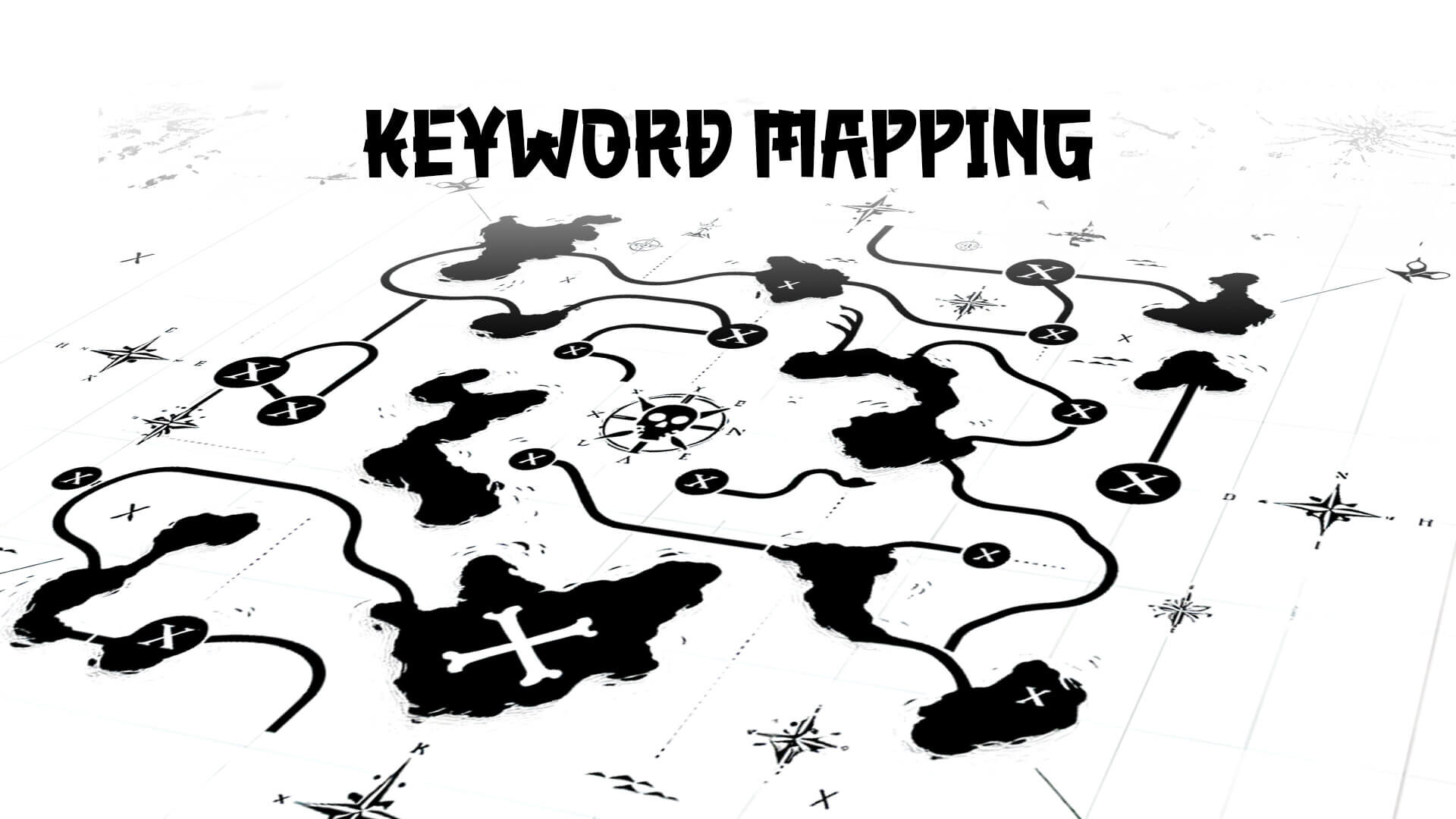
To steer clear of this, SEO keyword mapping is your go-to solution. It’s a process that assists in pinpointing the right keyword phrases and deciding their exact placement on your website. This way, you can utilise keyword clusters on a particular page without overlapping with others.
Do you want to learn about how this operates? Then, let’s explore keyword mapping and how you can use it to maximise the relevance of each page for search engines.
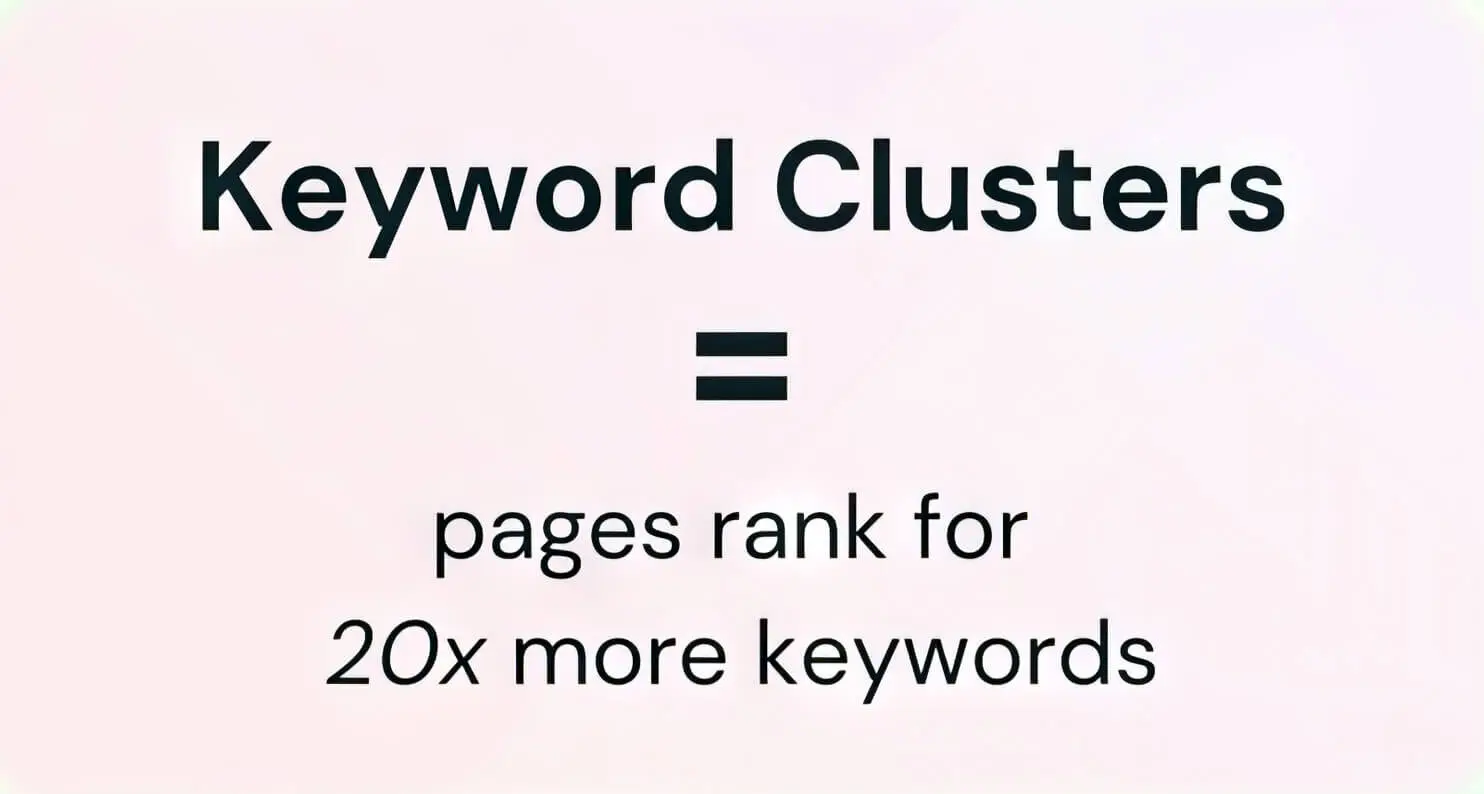
Why Is Keyword Mapping Important?
Keyword mapping helps strengthen any SEO strategy, providing you with the best possible keywords to use on a page without any overlaps. Thus, it enables you to avoid the disadvantages of keyword overlap and keep the search result rankings of your pages at a healthy level.
In addition to preventing keyword overlap, exploiting the benefits of keyword mapping can significantly uplift website performance, making a significant difference in website rankings. Here is a brief exploration of what you gain from the process.
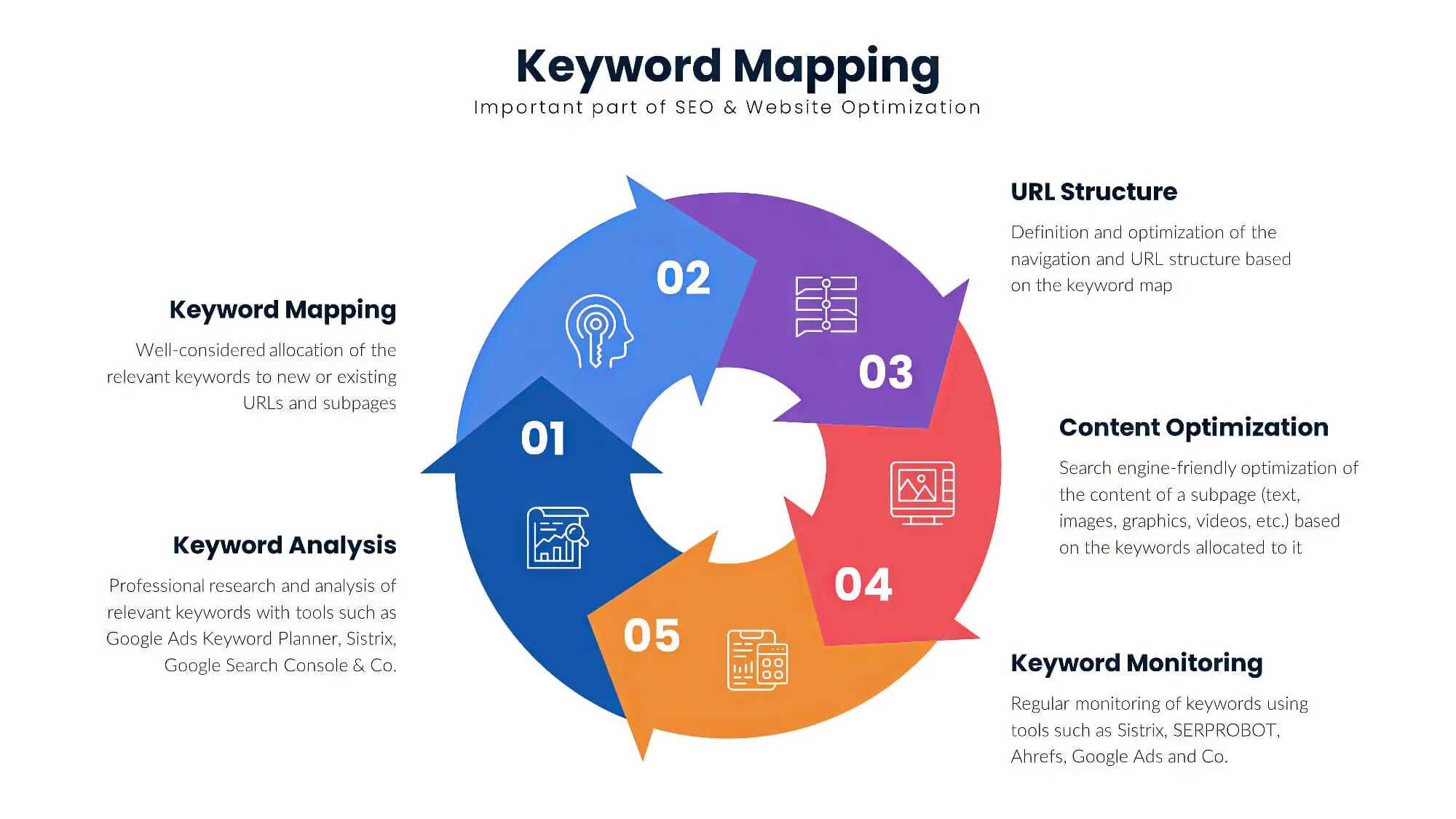
1. Find Missing Keywords
Keyword mapping is a convenient way of finding any missing multiple keywords and using them on relevant website pages. Alternatively, the overlooked keywords suggest opportunities for enhancing existing pages, particularly if the missed words are associated with high-volume search terms.
This allows you to cover all bases, and your website climbs top-ranking pages more effectively.
2. Improve Website Optimisation
With keyword mapping, you can glance at all your website pages, SEO stats, and desired keywords simultaneously. It’s a one-stop view that lets you quickly spot weak spots and optimise them swiftly.
With a good keyword map, you can prioritise key areas of optimisation and judge whether others can be postponed or not.
3. Online Performance Analysis
Keyword maps are the best way of viewing the performance of your website. It displays the ranks of each page, along with which related keywords rank higher than others.
This can provide insight into the best way to proceed with keyword optimisation and plan for the future.
4. Stronger Internal Links
Internal linking is just as important as keyword ideas when an SEO strategy is concerned. If your website uses the most relevant keywords well and maps them to the corresponding web pages, your internal link-building becomes much more efficient.
Not only does your website become easy for users, but a strong internal linking profile also benefits search result rankings.

How To Map Keywords To Your Website
While SEO keyword mapping is fundamentally straightforward, it can be time-consuming to carry out. Make sure you dive into thorough research before embarking on your first keyword map.
Follow this step guide to create a keyword map for your site.
1. Perform Keyword Research
The first step when creating a keyword map for your website is to perform keyword research. This lengthy process takes some time to implement but is worth the investment of a few minutes.
First, you must identify the main keywords that suit each page of your website so that they want to rank well on search results. These main keywords are also known as “seed keywords,” which you can use to pinpoint a larger number of target keywords.
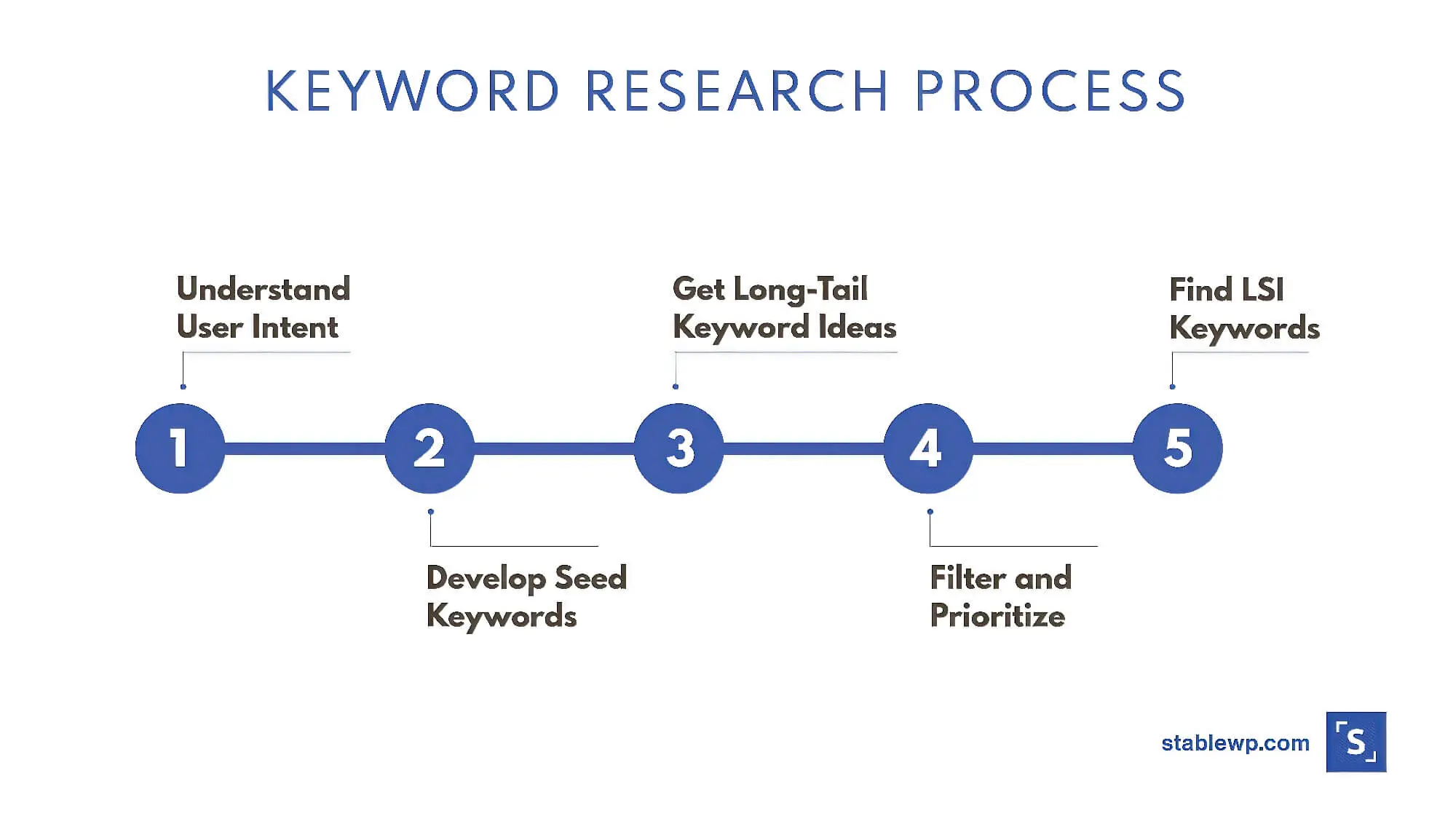
To do so, you will need a keyword research tool, which will allow you to use the seed keyword. Using the tool, identify all the words and phrases associated with your website while checking those being used by your competition.
Important to remember about keyword research is prioritising related keywords based on your overall content and social media marketing strategy.
2. Step 2: Organise the Keywords
After compiling an extensive list of keywords, you can begin organising them based on search intent.
Group keywords relevant to a particular search query and segregate them into main, secondary, and tertiary keywords. The primary keyword will address the search intent the closest way, while the other similar keywords will help you define the webpage’s structure.
This helps you create a viewing path for users that allows them to browse the site easily. Also, this creates a comprehensive guide for search engine spiders as well.
Be sure to include target keyword variations while organising them to cover as much ground as possible. For instance, if your primary keyword is “search results pages on Google,” the variant keywords will be something along the lines of “Google’s search result pages”.
Additionally, try to keep the webpage URL in mind while creating keyword groups. The URL should contain the main keyword, which helps the search engine identify the content of your webpage.
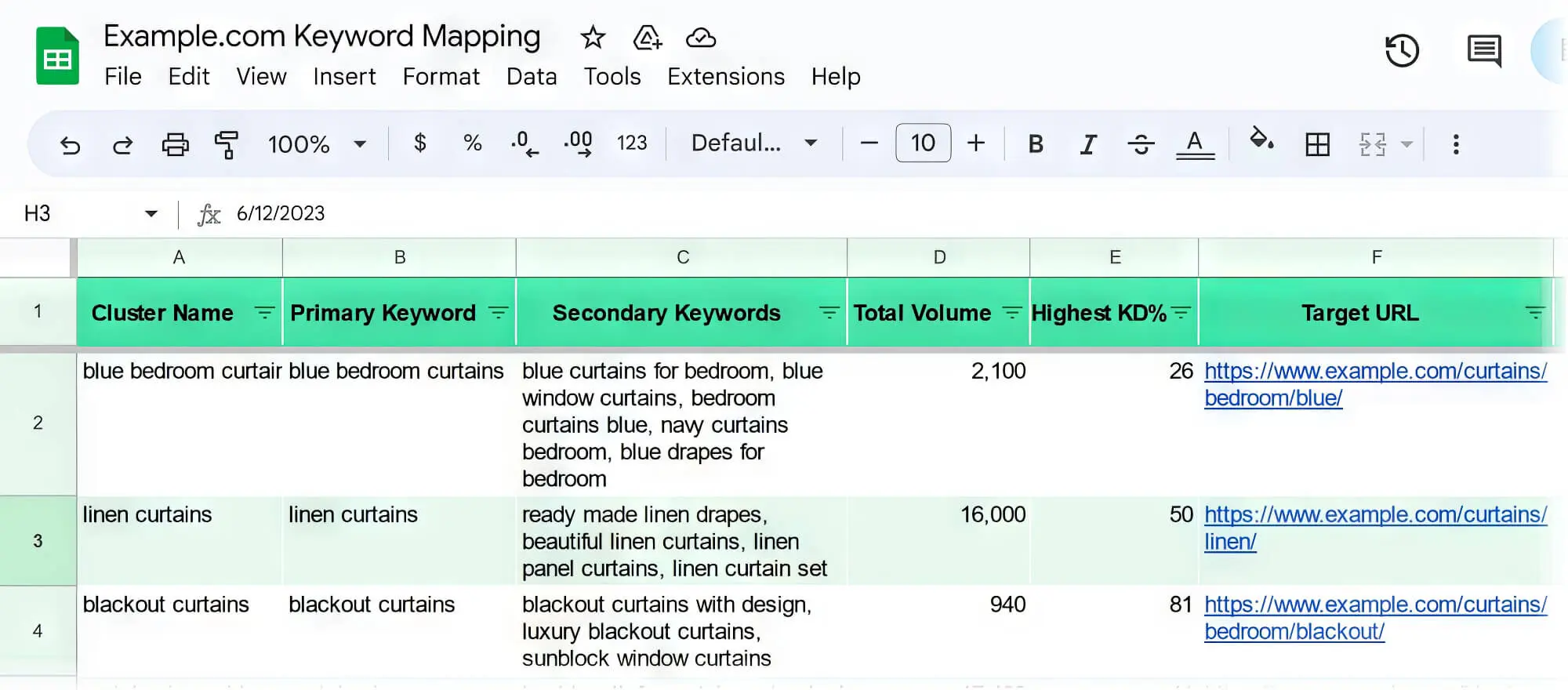
3. Mapping Keywords To The Site Structure
One of the most critical parts of keyword mapping is building the keyword map.
Step 1 here involves creating an outline of your website in a logical way, after which you should create subdirectories with separate web pages. You can use Google Sheets to keep track of all the data easily.
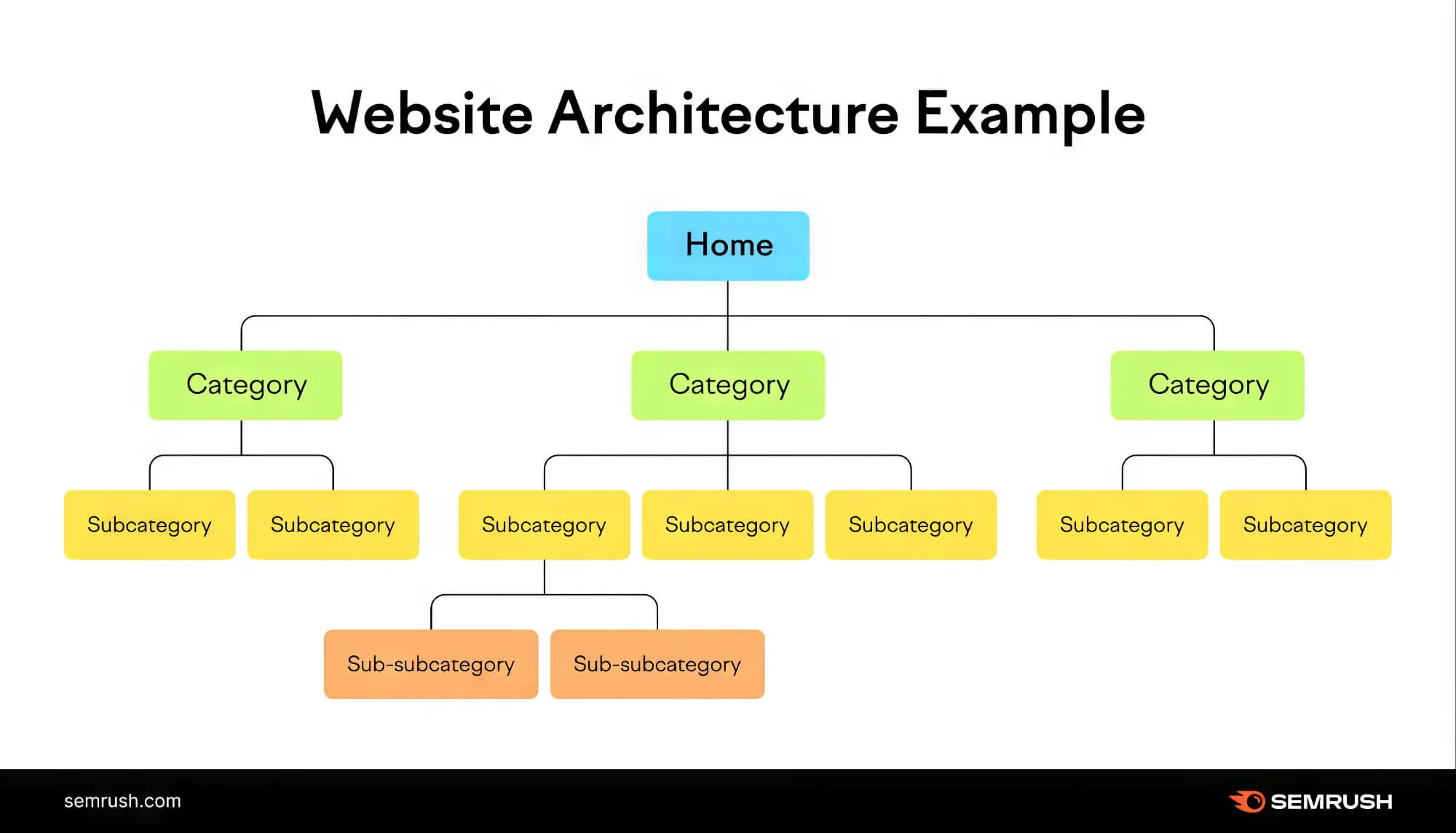
Next, use the main keywords accumulated in the previous steps to create your web page’s title, meta description, header tags, etc. Alongside the main target keywords, list the secondary target keywords to be used for the respective pages in a separate column. Ensure you have dedicated columns for heading tags, existing titles, and updated keyword versions alongside the main and secondary keywords.
Another important point to remember is to ensure that one page has a distinct set of keywords to distinguish them from one another. That way, your pages won’t have to compete with each other in the search engine rankings.
4. Web Page Optimisation
The content of your web pages must be optimised before they are ready to be deployed. This means you must keep an eye on issues that must be addressed for the page to perform well on search rankings.
These issues include the following:
- Missed internal linking opportunities
- Irrelevant content
- Misplaced or missing content
- Multiple relevant pages with the same target search query
- Technical issues
5. Continue To Work On Keyword Maps
Even after every page of your website has been well-optimised, the work doesn’t end there. For your pages to perform consistently well, you must continue to work on the keyword map regularly.
Ideally, you should look back at the keyword map of your website at least once every month for keyword updates. If your content doesn’t require many updates, consider updating your blog post more or less frequently.
Additionally, ensure that your new blog posts aren’t targeting identical search terms as established content. Should the need to redo old content ever arise, remove the older version or redirect its URL to the newer one.
Want to receive updates? Sign up to our newsletter
Each time a new blog is posted, you’ll receive a notification, it’s really that simple.
Implementing Mapped Keywords Without Keyword Cannibalisation
As mentioned earlier, the different pages on your website should not have to compete with each other for a spot on the search results page.
But should a set of pages fail to do so for the same website, the likelihood of each page finding a spot on the search results diminishes significantly. This phenomenon is known as keyword cannibalisation.
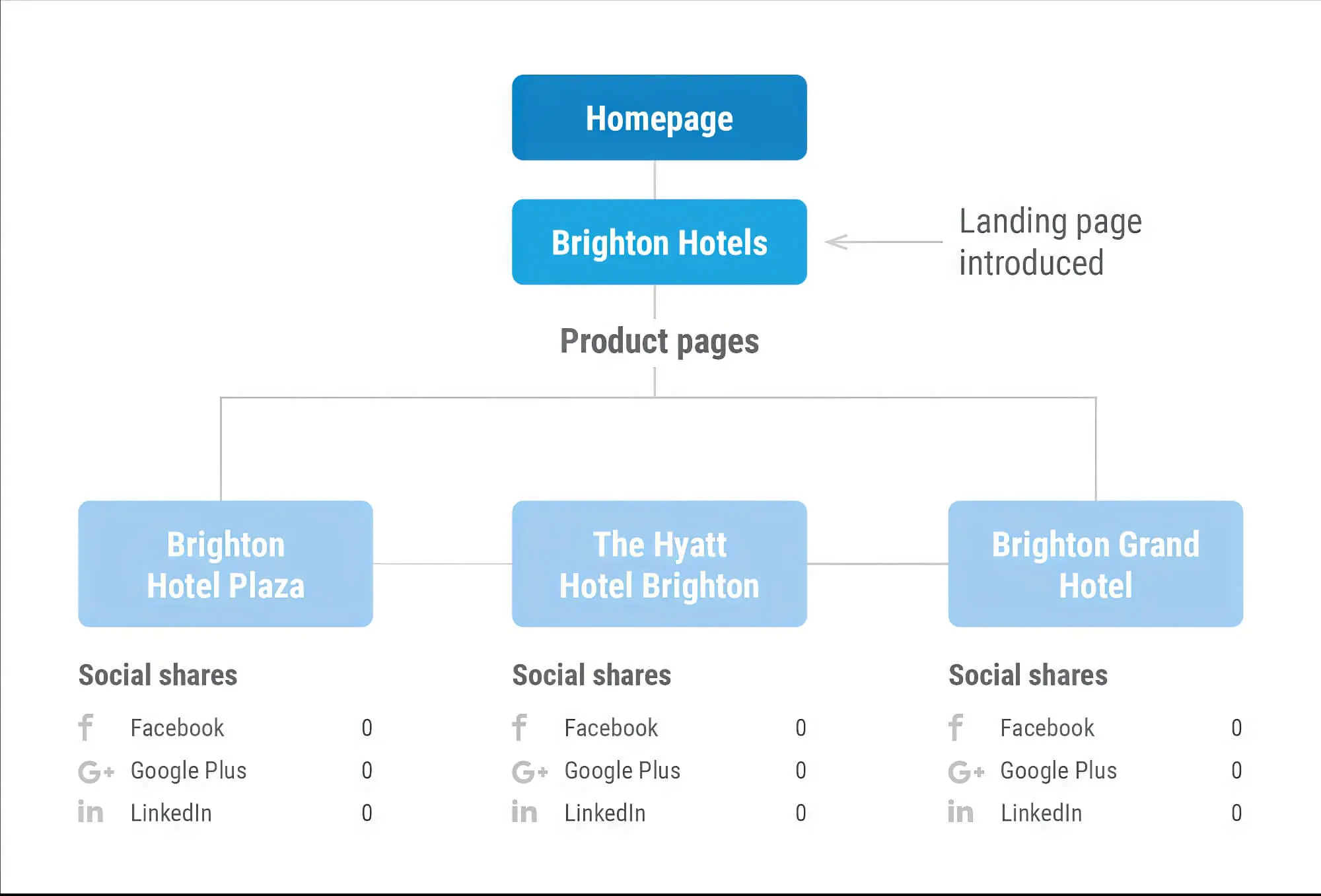
So, if you find that a few pages on your website contain similar informational keywords, it’s important to reconsider how they have been mapped. You can start by reviewing page 1 of the keyword map and find out what aspect of a particular query it targets. If similar enough, you may want to alter the main keywords and other keywords to prevent the pages from diverting traffic from one another.
Another method you can try is to use the search queries in incognito mode to determine the results they yield. You should map the main keyword to the same page if the search results produce similar results. But if this is not the case, you may have to remap the keywords to different URLs.
To simplify this process, you can use a tool that takes care of the issue for you. Such keyword mapping tools have a feature that displays the traffic share of each page. Here, you can input your main target keyword and find out if you should create multiple pages for a particular search term.
Tracking And Analysing Keyword Performance
Tracking and analysing keyword performance is a part of the long-term optimisation process that ensures a steady flow of organic traffic to your pages. This is to ensure that as long as a particular search term remains relevant, so will your content.
Analysing keyword performance can help you gauge the effectiveness of your keywords with regard to organic traffic conversions and website revenue. Knowing how to do so is essential for measuring and optimising the content in the long run.
Here’s how you can track and analyse keyword performance for your web pages.
1. Choose And Track Keyword Rankings
First, pick the keyword suggestions you need to track the performances of, either manually or using a search engine optimisation tool.
You can use tools like Google Keyword Planner, Moz and SEMrush to sort and analyse keywords based on specific metrics. These metrics can be used to base your keyword performance analysis on and include click-through rate, impressions, bounce rate, clicks, conversion rate, etc.
Next, use a tracking tool like Ahrefs to track the rankings of your keywords on a daily, weekly or monthly basis. You can also use this tool to group your keywords based on the device, search engine and user location to make the keyword difficulty analysis even more focused.
By doing so, you will have access to a wealth of data that gives you insights into the performance of a page among a particular target audience.
2. Keyword Performance Analysis
After accessing the data from the tracking tool, you can compare the performance of your keywords with that of the competitors. Software like Google Analytics and Google Data Studio can show you how each keyword helps drive traffic, conversions and revenue to the site.
Additionally, you can use such pieces of software to find out the performance of landing pages, channels and segments. With tools like the Google Search Console, you can monitor keyword performance in specific search features like image search, featured snippets, etc.
3. Identify Shortcomings And Address Them
Based on what you infer through analysis, identify the potential shortcomings with your keywords and resolve them through optimisation. Tools like SEMrush and Ahrefs can aid you in this endeavour by helping you find the keywords that your competitors may have missed.
Try to make it a point to use keywords with high search volume but low competition. This gives your pages plenty of room to drive traffic and conversions quickly without having to struggle with competition.
You can also consider using optimisation tools to improve your website’s content quality, readability and relevance. Additionally, consider using technical SEO tools to improve the overall website performance and usability. After all, user experience plays a large role in maintaining a healthy user base.
And be sure to use link-building tools to improve the website authority to make it more likely for Google to identify it as a trustworthy source.
4. Adjust Keyword Strategy As Necessary
After evaluating keyword performance, you may need to adjust your keyword mapping strategy based on what is the most effective.
With tools like Google Optimise, you can test various versions of the website content to find the most optimised one. This also includes the SEO for the content, which makes such tools quite efficient for the process.
You can also use feedback tools like Hotjar to aggregate user opinions and use them to make the necessary improvements. Be sure to fix any issues or errors users may regularly encounter.
Best Tools For Keyword Mapping
A keyword mapping tool can be an efficient addition to your arsenal of SEO tools. Not only do they reduce the time it takes to map keywords, but they also come with a slew of other handy SEO features.
Here’s a brief overview of the five best tools for the keyword mapping process.
1. Ahrefs

Ahrefs stands out as one of the most popular keyword research tools, celebrated for its intuitive design and diverse capabilities.
Providing a beginner’s guide through intuitive dashboards, you can use this tool to perform keyword analysis, competitor analysis, assess keyword rankings, keyword difficulty, long tail keywords, complimentary training material, and more. Ahrefs also has a strong community behind it that can provide you with support when needed.
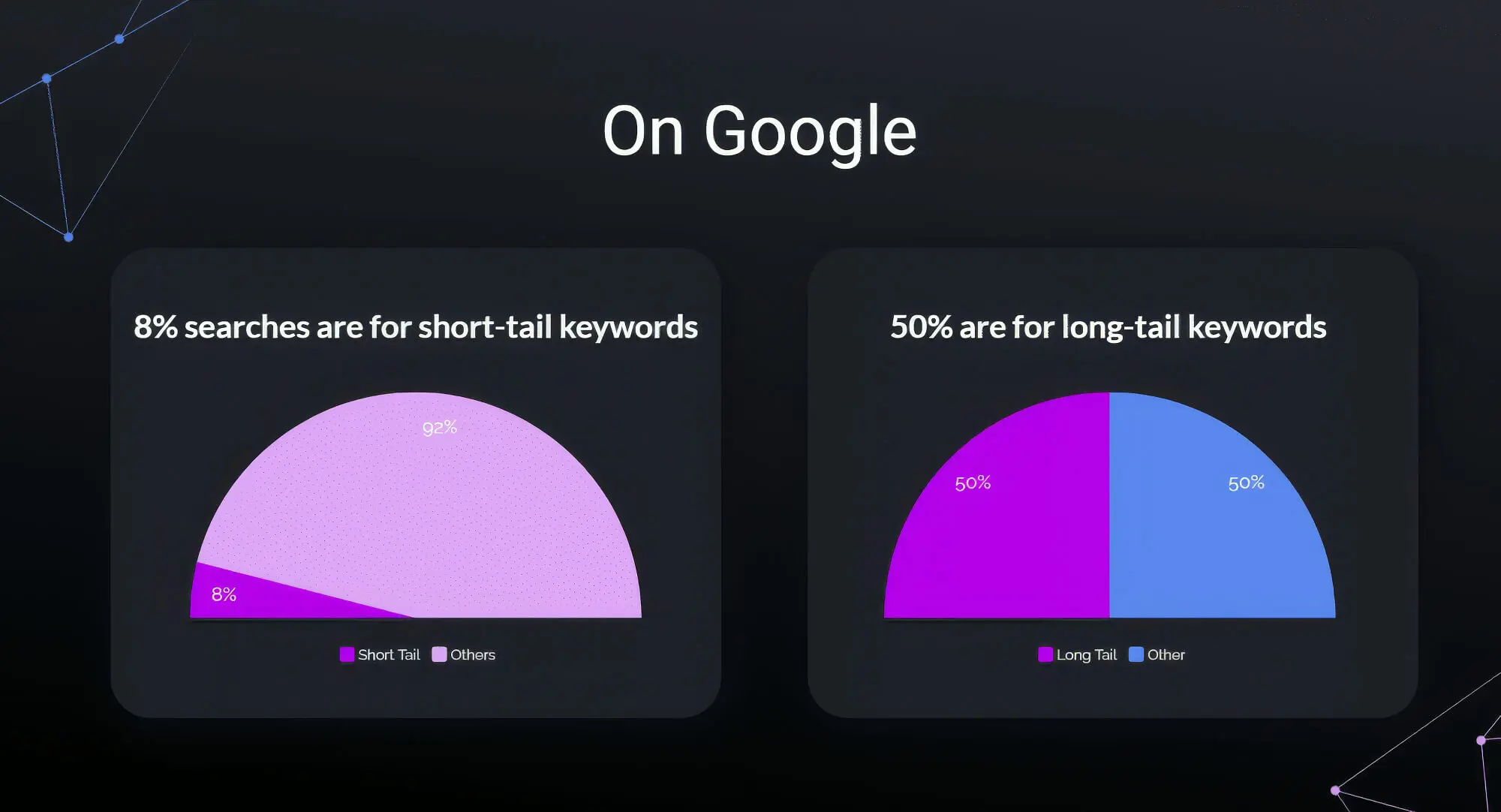
Combining a beginner-friendly nature with a high level of functionality, Ahrefs is an option for users of all levels.
2. Moz
Moz has a collection of SEO tools that can help you perform proper keyword research and mapping. Like Ahrefs, it can work for users of all skill levels, making it a good option for beginners and experienced SEO users.
In addition to keyword research and mapping, Moz can perform an SEO audit of the website, analyse competitor performance, and have on-page optimisation tools. You may also use it to find any shortcomings with your content and optimise the page with the data Moz provides.
And like Ahrefs, Moz is highly scalable, making it suited for all kinds of businesses.
3. SEMrush
SEMrush is a highly versatile SEO tool for mapping keywords and other SEO efforts.
SEMrush is built for utility, offering a comprehensive tool with various dashboards to support every facet of SEO. Use it for keyword research, site audits, on-page optimisation, among other tasks. It also covers local and global SEO performances and rank tracking.
Being simple to get into, SEMrush can be used by all kinds of users. The depth of services it offers makes it suited for businesses of any scale as well, making it a well-rounded SEO tool.
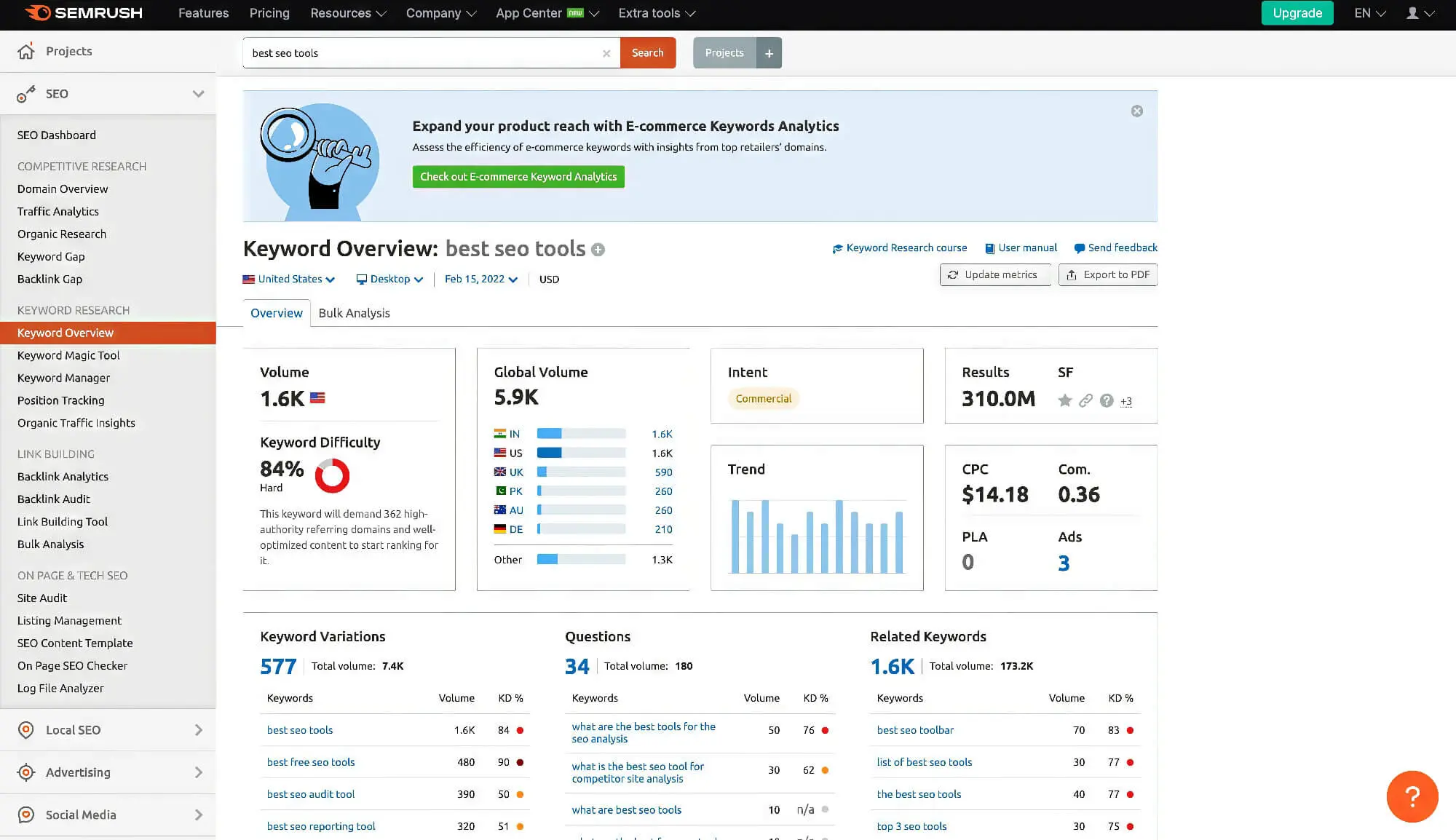
Continually Refining Your Keyword Strategy
Getting ahead of the competition is the name of the game, and keyword mapping is an essential aspect of it.
Keyword mapping for SEO may be the key differentiator between being at the top of SERPs and losing traffic to your competitors. Naturally, you must take advantage of all the tools and methods available to remain at the top in this field.
And for this, use keyword mapping to organise your content well and optimise it as much as possible. But take a look to ensure that none of your pages succumb to keyword cannibalisation.
Lastly, be sure to update your keywords as time goes on. Like SEO, keyword strategies require constant adjustments over a long period, so you should check your keyword map periodically.
If you need help with your SEO, keyword research or content, speak with us at sitecentre®. Our team supports your digital marketing efforts to build your online presence and produce a website that converts!





